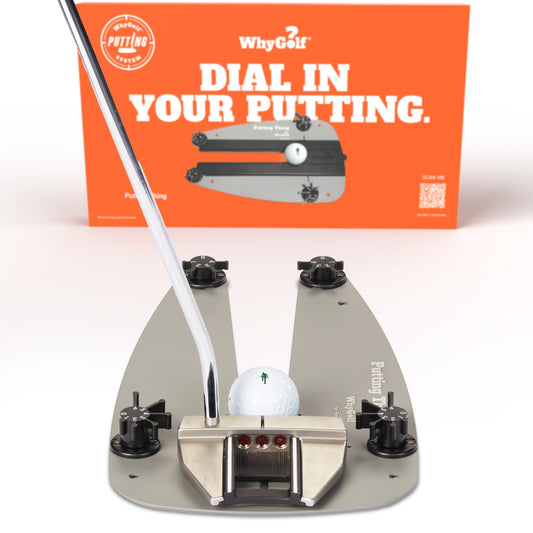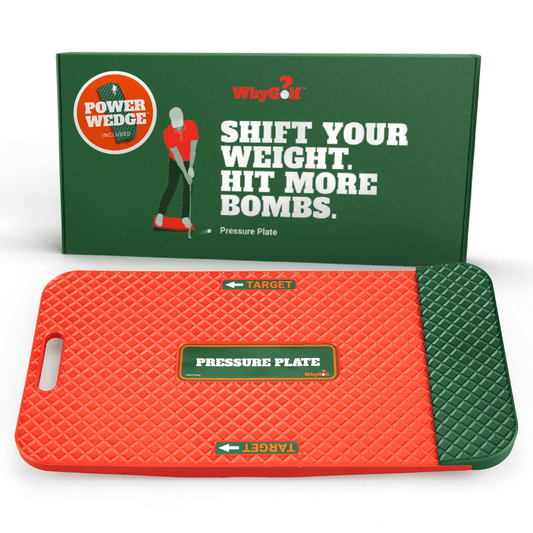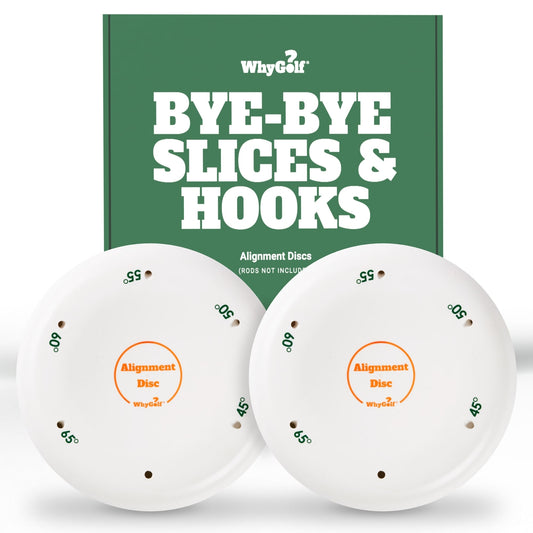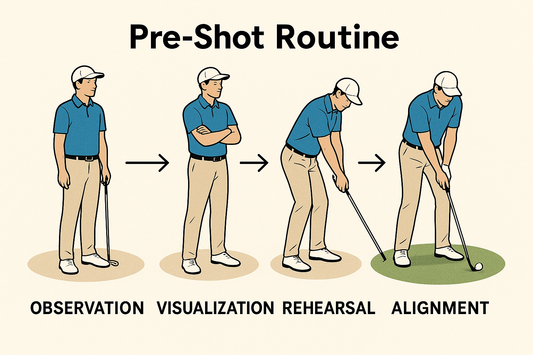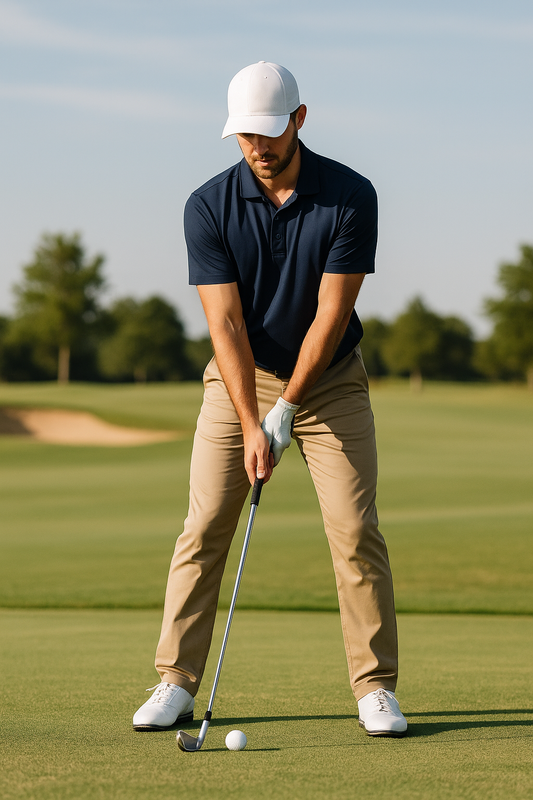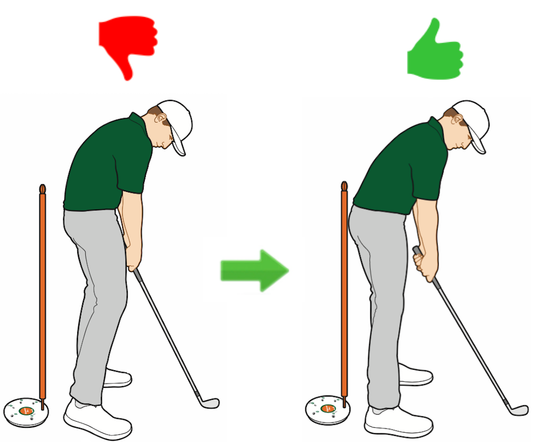Author: WhyGolf WhysGuy
We want to preface this guide with the acknowledgment that neither WhysGuy nor anyone from the WhyGolf team claims to know everything about the golf swing. We don’t want anyone to treat what we say here as gospel. While much of what we’ll say is a reflection of decades of dialogue with PGA instructors and players, we’re always learning and we understand that knowledge about the sport of golf will continue to evolve over time.
In this post, WhysGuy will cover:
- How to hit a bunker shot and actionable tips to prevent your wedge from digging into the sand.
- How getting your setup right is the most element to consistent bunker play.
The bunker swing is unlike any other in the game of golf. It's not an intuitive motion, which could explain why we see so few amateurs arriving at the optimal technique naturally. Without a proper setup, it's exceedingly difficult to become proficient at hitting out of sand traps. We're here to help you learn how to hit a bunker shot.
It's now time to take you through the fundamentals of a typical greenside bunker shot. In the section that follows, we'll discuss how you can apply these learnings when you practice on your Bunker Mate.
How to Hit a Bunker Shot
How to Hit a Bunker Shot - Key Takeaways:
- Setup is the most important element to consistent bunker play - wide stance, squat down, weight forward, handle low, clubface open.
- When hitting out of the bunker, make sure you accelerate through the sand and keep your club from turning over.
- To learn how to hit a bunker shot, consider using Bunker Mate so you can practice your bunker game wherever you go.
Ready to dial in your greenside bunker game? Purchase your Bunker Mate here.
What's most important when hitting a bunker shot?
There are a few key elements to remember when playing golf bunkers. To begin, it is critical to have a consistent and repeatable setup. Positioning your feet and ball, opening the clubface, and aligning your body to the target are all part of this. Good technique is also required, which includes a steep angle of attack, a wrist hinge, and a follow-through that extends beyond the ball. Power is also important; rather than hitting the ball directly, you want to hit the sand behind it to create lift and spin.
Are there instructional videos available?
Yes. See below and reference our other instructional vidoes under the "Instruction" tab on our website. Also, check out our YouTube channel below for additional instruction.
How do I learn to hit a bunker shot?
Hitting a bunker shot is often regarded as one of the most difficult shots in golf, but it is one that can be mastered with practice and the proper technique. It's critical to understand the proper setup and execution when learning how to hit a bunker shot.
To begin, choose the appropriate club, usually a sand wedge, and open the clubface. In your stance, move the ball forward and aim to hit the sand just behind the ball. Keep your lower body quiet as you swing and accelerate through the shot, allowing the sand to lift the ball out of the bunker.
Regular practice is essential for improving your bunker play. Locate a practice bunker and spend time experimenting with club selection, ball position, and swing technique. To fine-tune your technique, study instructional materials, watch tutorial videos, and seek advice from a golf professional.
Aside from technique and practice, having the right mindset is essential for good bunker play. Approach each shot with confidence, picturing the shot you want to hit and believing in your swing. Anyone can learn to hit a bunker shot and improve their overall golf game with consistent practice and the right mindset.
What are the most important elements to good bunker play?
It's important to ensure you open your clubface at setup, have your ball position forward of center, and accelerate through the sand.
In addition to these technical aspects, having the right mindset is critical for bunker success. You must be confident in your abilities while remaining relaxed and aware of the situation and the type of shot required. Regular bunker practice can help you develop the necessary skills and confidence to tackle even the most difficult bunker shots. You can improve your bunker play and take your golf game to the next level by focusing on these key elements and staying committed to your practice.
How often should I practice my bunker technique?
Bunker shots are among the most intimidating shots in golf, but with consistent practice, they can become a strength in your game. It is recommended that you practice these shots on a regular basis to improve your bunker technique. The frequency of practice is determined by your skill level and the amount of time you have available to devote to your game. As a general rule, practice bunker shots at least once a week, or more frequently if this aspect of your game is a problem for you.
Focus on proper setup, ball position, and swing technique during practice to produce more consistent shots. To simulate real-world situations, use a variety of lies and distances, and practice different types of shots, such as high and soft or low and rolling. It's also a good idea to use training aids, such as alignment sticks or a practice net, to improve your technique and boost your confidence in the sand.
By regularly practicing your bunker technique, you'll develop muscle memory and the feel required to execute these shots with greater consistency on the course. With practice, you'll be able to hit bunker shots with confidence and get up and down more frequently.
Check Out Our YouTube Channel For Drills and Tips



